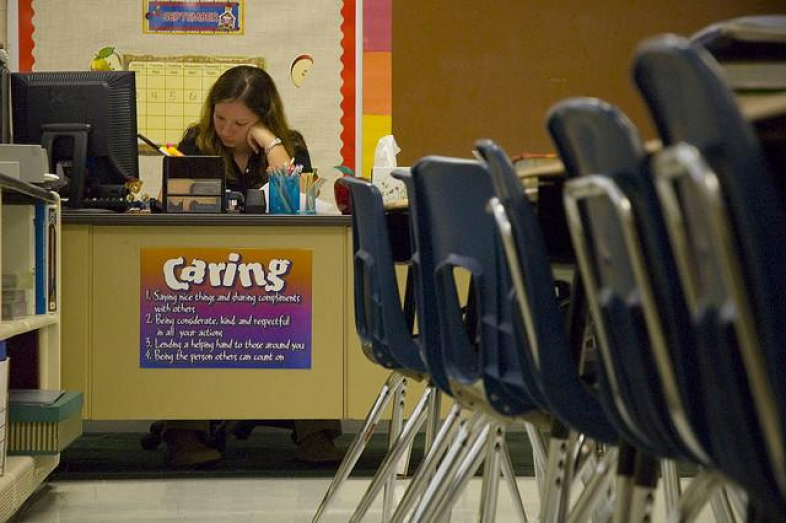

When a group of Harvard educators surveyed ninth-grade teachers and their students during a recent experiment, they found students who had common interests with their teachers started to perform better academically. The improvements were especially remarkable among black and Latino students.
The multiple-choice, “get-to-know-you” survey asked participants – 315 students and 25 teachers at a large suburban high school in the Southwest – to identify things like their favorite hobbies, which TV show genres they prefer, whether they speak a second language and how they would best describe their personalities.The researchers then selectively shared examples from the survey results with teachers and students to reveal their common interests, according to a recent NPR report.
“When we look at academic achievement with respect to these black and Latino students, what we find is that when they’re in the treatment group, their grades go up by about .4 of a letter grade,” said researcher Hunter Gehlbach. This “translates into over 60 percent plus reduction in the achievement gap at this school.”
As Rebecca Klein of The Huffington Post reports, it’s unclear why minority students saw the largest academic gains after researchers compared the survey participants’ mid-quarter and final-quarter grades, but their study — entitled “Creating Birds of Similar Feathers” — offers potential explanations:
“For a group of predominantly white teachers, learning what they have in common with their underserved students may be critically important. Indeed, we find that teachers report interacting with these students more frequently. From this knowledge and the increased interactions, teachers may connect better with students at an interpersonal level and may be better equipped to connect their subject matter to students’ interests. If this scenario transpires, greater learning seems a likely consequence.”
The teachers polled were mostly males and 80 percent white. In contrast, the student participants were 60 percent female, 51 percent white, 19 percent Latino, 11 percent Asian, and 6 percent black, reflecting the demographic make-up of the school itself.
Since the online survey was released in August, Gehlbach said more than 2,000 teachers have already used it to bond with students in their classrooms. He is “cautiously optimistic” that it could take off and work for a lot more people.


